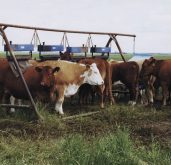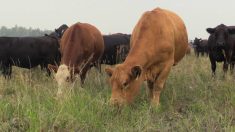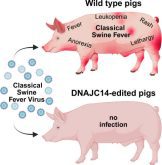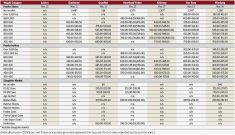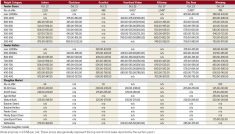emember your mother telling you to eat slowly and not gobble your food?
As it turns out, Mom’s advice applies to calves as well as kids.
Dairy hei fer calves are healthier if taught not to gulp down grain, according to research at the University of Guelph.
Researchers found mixing grain with forage in a total mixed ration (TMR) caused young heifers to sort feed less and eat more slowly, resulting in a healthier rumen and a better-adjusted animal.
Feeding TMR at a young age may also influence a replacement heifer’s future feed consumption patterns. This could translate into a healthier and more productive cow once she starts milking, research suggests.
Read Also
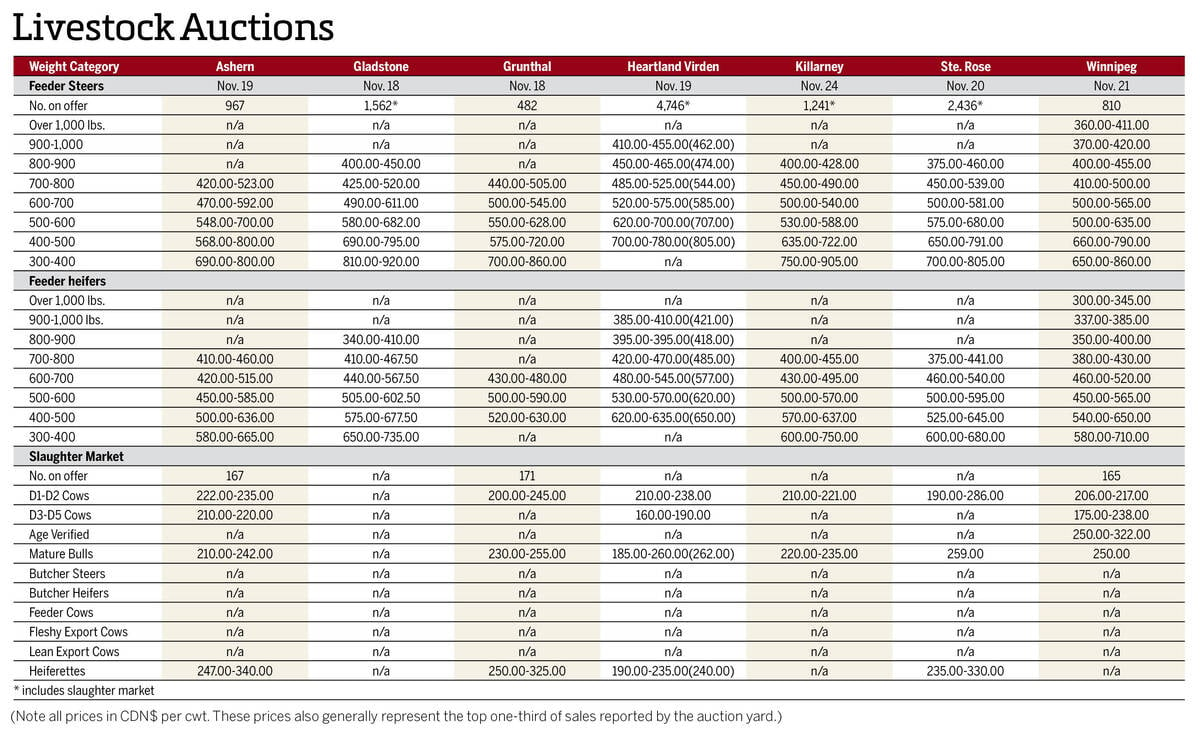
Manitoba cattle prices – Nov. 24
Cattle prices from Manitoba’s major auction marts for the week of Nov. 18-24.
Typically, dairy calves go to a grain concentrate and forage ration after weaning at about six months of age. Usually, the grain is fed separately or as a top dressing.
GULPING THE GRAIN
Experience shows that calves tend to eat grain quickly and forage more slowly over the rest of the day.
Because their rumens are still developing, consuming large amounts of grain quickly can cause the pH in the rumen to drop significantly, contributing to subacute ruminal acidocis.
Feeding TMR can avoid that problem. A mixed ration combining grain and forage slows the eating and promotes the secretion of saliva which buffers the rumen, stabilizing the pH, said Trevor DeVries, an assistant professor of animal and poultry science at the University of Guelph’s Kemptville Campus near Ottawa.
“Studies have shown that providing TMR can provide a much more consistent and balanced intake of nutrients over the course of the day which can promote better rumen health,” DeVries said.
He added TMR-fed calves are better adjusted, too. Calves compete vigorously for grain fed as a top dressing because it’s gone if they don’t get to it quickly. Mix grain in a TMR and calves become less competitive
for feed because their feeding is spread throughout the day.
Significantly, feeding patterns observed in the different groups studied continued as the rations changed. This suggests those patterns were learned, said DeVries.
LONG-TERM HABITS
Further research involving calves still at the milk-feeding stage will look at how early feeding and management affects an animal’s long-term feeding habits, he said.
Grain-feeding calves is a bit of a catch-22, said Rob Berry, a MAFRI dairy specialist. Calves require grain to help their rumens develop. But feeding too much grain results in too much acid which damages the developing rumen.
Feeding TMR still allows for the specific fermentation necessary for rumen development without causing acidosis, Berry said.
If TMR is so good for dairy heifers, why don’t more producers provide it?
It’s a question of scale, Berry explained. Making suitable batches of TMR for small herds is difficult. Equipment for mixing TMR is designed to manufacture sizable volumes for large herds.
Berry said TMR is more practical in the United States where dairy herds can number thousands of cows. In Canada, the average herd has 75 to 80 cows.
“If the research is applied to a farm scale, that farm’s going to be fairly sizable,” said Berry.
“Or it probably applies more to a custom heifer raiser who can afford to do the economy of scale and do a huge batch of TMR for 100 calves at a time.” [email protected]
———
“ProvidingTMRcanprovideamuchmore consistentandbalancedintakeofnutrients.”
– TREVOR DEVRIES, UNIVERSITY OF GUELPH


